Food-Fibre-Fashion #18 24/12/24.
This edition considers participation. Actively and consciously engaging with food and textiles and fashion, and so on. Imagine if we wrapped up stories instead of stuff.
Welcome to this eighteenth edition of Food-Fibre-Fashion. A collection of tips, recommendations, opinions, learnings and knowledge exchange regarding the intersection of the food, fibre and fashion sectors.
This edition considers participation. Actively and consciously engaging with food and textiles and fashion, and so on.
Previously hosted only on LinkedIn, I’ve brought it over here in case you like Substack’s format. So, for full disclosure, while this is edition 27 on LinkedIn, it is edition 18 here. Subscribe to receive this bounty in your mailbox every other month.
Opinion.
Imagining possibilities: The future of fashion. ⇾
Celebrating fifteen years of the MA Fashion and the Environment / MA Fashion Futures at London College of Fashion, this ‘sustainability social’ from Centre for Sustainable Fashion reflected on years of changemaking within the fashion system. It considered what the next 15 years will (or could) look like, and then I brought together questions and presentations of work into the categories of relationships to nature, reframing growth, reparations, materials and commodification.
I’m always a little disheartened when I’m in a room of folk with similar mindsets who are talking about shifting a system. Especially when fifteen years on we’re still doing the same, and generally, still talking about the same. While I’ve tried to be optimistic here about the scenario we’re in and the actions we may need to take, it does ultimately feel like snail’s pace when we need a seismic shift. I existed there in that space wondering what I was myself really doing; I write and I chat, attempting to communicate the need for interconnection, or I storytell through workshops and one-off products. It’s not like I’m doing anything dramatic.

Podcast.
Fashion Revolution: Who Made My Clothes?. ⇾
Particularly useful for case studies on garment workers, and probably for anyone too that hasn’t really dived in to this area of the industry before. The fashion journalist Tamsin Blanchard speaks to researchers, supply chain experts, garment workers, politicians and activists about the working conditions of factories across the world, with discussion on findings from the Garment Worker Diaries project.
![1. Fashion Revolution podcast Who Made My Clothes? graphic [Credit: Fashion Revolution]; 2. Quote from a female garment worker from Dhaka from the Garment Worker Diaries project [Credit: @workerdiaries].](https://substackcdn.com/image/fetch/$s_!HThc!,w_720,c_limit,f_auto,q_auto:good,fl_progressive:steep/https%3A%2F%2Fsubstack-post-media.s3.amazonaws.com%2Fpublic%2Fimages%2F9393143d-5f4a-4ae8-8f21-12a06b81b7b1_750x750.jpeg)
![1. Fashion Revolution podcast Who Made My Clothes? graphic [Credit: Fashion Revolution]; 2. Quote from a female garment worker from Dhaka from the Garment Worker Diaries project [Credit: @workerdiaries].](https://substackcdn.com/image/fetch/$s_!wUXy!,w_720,c_limit,f_auto,q_auto:good,fl_progressive:steep/https%3A%2F%2Fsubstack-post-media.s3.amazonaws.com%2Fpublic%2Fimages%2Fd4ad96a9-61f3-4941-aff6-82af0efc2b54_1310x1174.png)
Film.
Buy Now: The Shopping Conspiracy. ⇾
This documentary narrates our collective desire for new through the voice of an AI. It tells of how, when following certain steps based on basic psychology, a corporation could suck consumers in further. It’s playful and tongue-in-cheek, and flows well. I was never going to be totally surprised by what was shown or discussed by former employees of the likes of Apple and Amazon, however, all was still shocking. I wonder if putting “conspiracy” in the title will prevent certain viewers from engaging with it, and is it really a conspiracy anyway? Surely everyone knows that they’re being manipulated, right? But as with Don’t Look Up last year, it’s kind of glitzy and trendy and hopefully with have some draw on younger viewers who have the panache to boycott these companies. Unfortunately, it is still the older generation I visibly see going all gung ho with shopping.
![1. Buy Now! The Shopping Conspiracy documentary trailer image showing a female sat at a laptop presumably shopping [Credit: IMDB]; 2. Shoppers piling boxes into a trolley [Credit: Netflix].](https://substackcdn.com/image/fetch/$s_!KjOG!,w_720,c_limit,f_auto,q_auto:good,fl_progressive:steep/https%3A%2F%2Fsubstack-post-media.s3.amazonaws.com%2Fpublic%2Fimages%2F6cc4a961-0d83-4c71-b647-c6a671e0d9ad_884x1250.png)
![1. Buy Now! The Shopping Conspiracy documentary trailer image showing a female sat at a laptop presumably shopping [Credit: IMDB]; 2. Shoppers piling boxes into a trolley [Credit: Netflix].](https://substackcdn.com/image/fetch/$s_!PLO4!,w_720,c_limit,f_auto,q_auto:good,fl_progressive:steep/https%3A%2F%2Fsubstack-post-media.s3.amazonaws.com%2Fpublic%2Fimages%2Fdf0ca2a2-ad0d-41d4-98cd-49ebd5d4a920_1200x675.png)
Book.
Finally my reservation on the library copy of The Place of Tides was available and within a week, taking moments to myself with a coffee to read bits before teaching an online sustainable fashion design course, I’d finished it. I’d travelled to those outermost islands to learn about the Norwegian tradition of eider duck nurture through nest-building, a practice to conserve their species number, with collection of eider down after hatching in a sort of quid pro quo agreement.
I’d learnt about eiderdown harvest first in the book Harvest: The Hidden Histories of Seven Natural Objects by Edward Posnett. Alongside vicuña wool, sea silk, vegetable ivory, civet coffee, guano and edible birds' nests, the eiderdown harvest was collected. I’d like to read it again now, after such an intimate account of how so-called duck women live. James Rebanks, as ever, tells the story with authenticity and makes it a straightforward read. I’d happily read again. It was a little incongruous teaching students across the world about the impacts of fashion, while reading an account of a totally precious material gathered with care and respect. Yet, this was a reminder that fashion (or textiles) doesn’t have to be completely commodified and destructive.
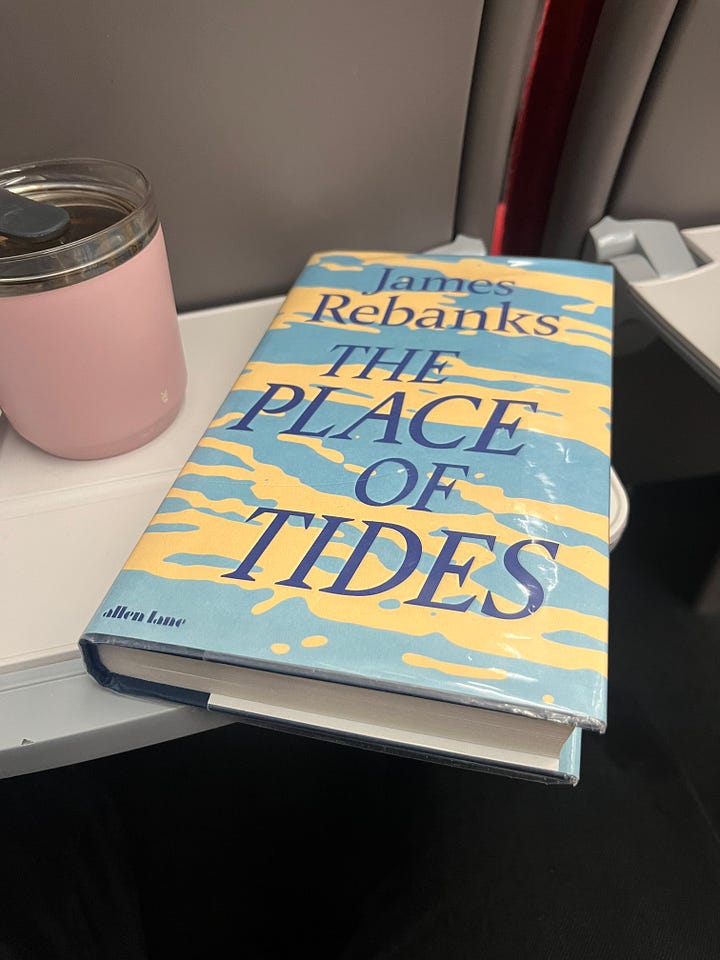
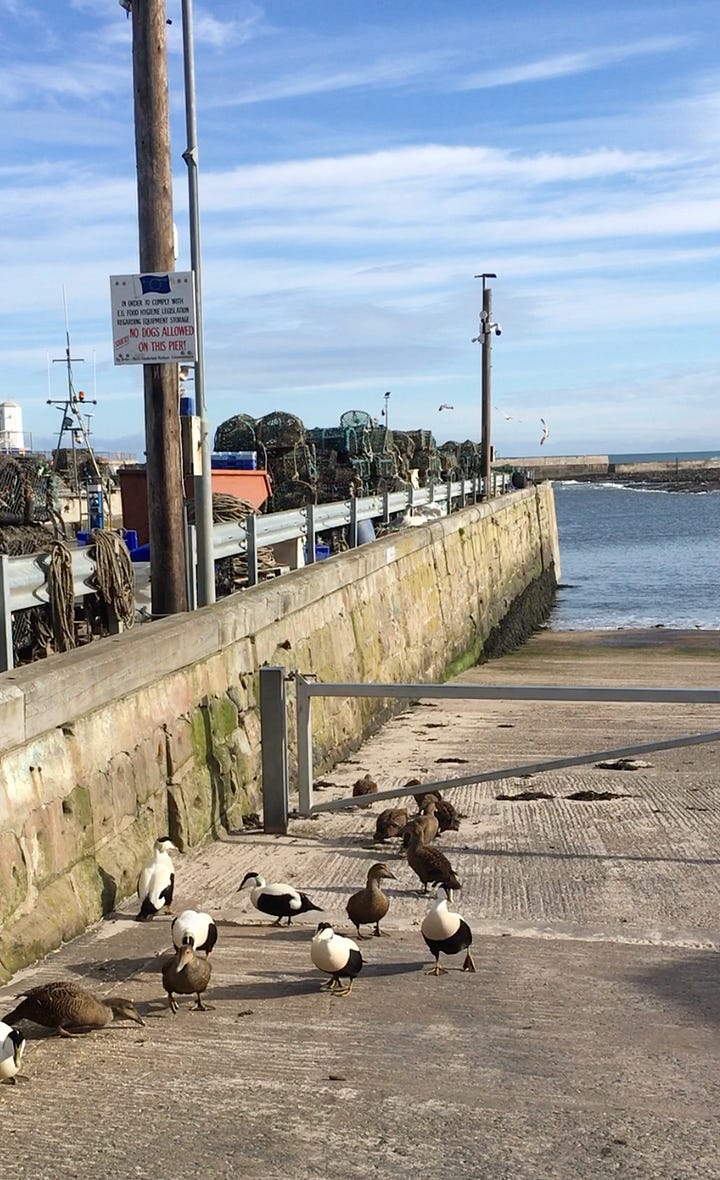
Campaign.
Farmers Against Farmwashing. ⇾
I did actually highlight this campaign in the last Food-Fibre-Fashion edition 17 in a bit about the organic movement. This campaign was launched right when I was hearing a relative amount from the organic space that came across as militant. That organic was the only way. Certification is the only way. Perhaps it is, so that there’s assurance, but I find certifications misleading; unless you do the work to understand what the stamp is for, you don’t know their parameters. It’s like with B Corp being made out to be top, when actually businesses are forced to make decisions that don’t align with their values, purely to meet their framework. This farmwashing campaign is about respect and acknowledgement of real farms for the farmers’ sakes, but also trust for shoppers, and a nudge for them to be inquisitive.
I’m highlighting it now too, because a couple ads on TV were conflicting. One was for Red Tractor standard, so you see this label on meat and therefore know it’s good and British (regardless of how nuanced “good” is), and the next was from Tesco on 15p bags of veg for Christmas.
The discrepancies with Lifecycle Assessments have been pushing my buttons again, because I’ve been teaching these students about context. One student did a SWOT analysis for their assignment, comparing Australian wool and cotton, for which I praised them as they didn’t look at global wool and global cotton, but suggested to still be cautious of oversimplifying. But that’s what life cycle frameworks are doing, with the Product Environmental Footprint leading the direction that all [European] fashion brands will go in once enshrined as the framework under the new trilogue of Green Claims Directives.
All of these claims, from food to textiles to fashion and everywhere else that’s commodified, you just need to be cynical, I reckon. An article from Wicked Leeks on fake farms for you to read further, and a report from Natural Fibres Insight for Winter 2024 covering such topics as the PEF an impact on use of natural fibres.
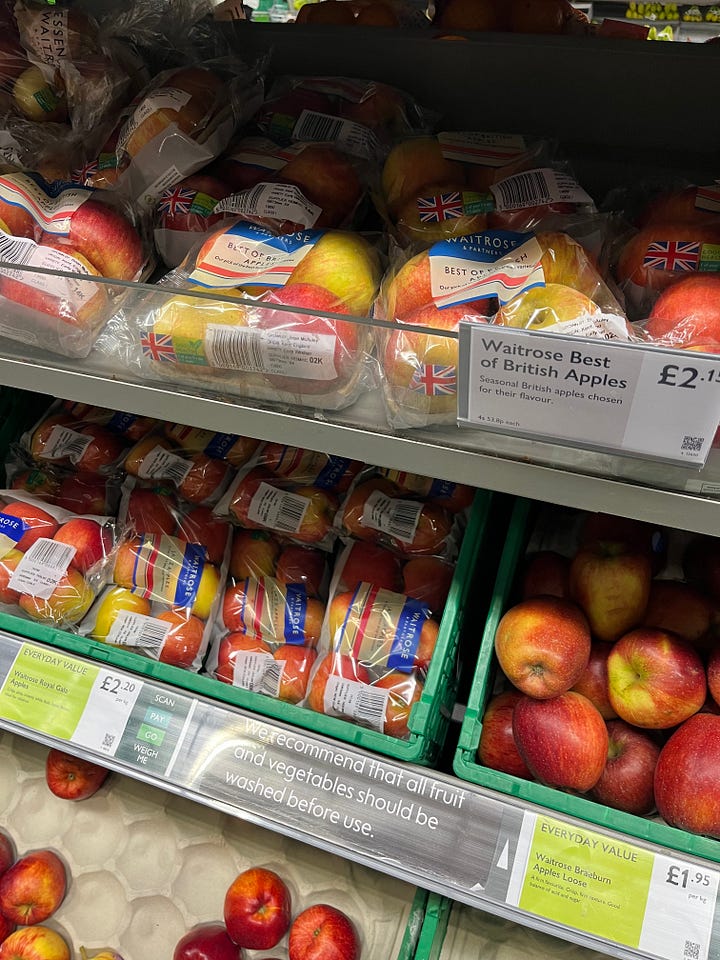

Learning resource.
Fashion’s Plastic Paralysis. ⇾
The latest textiles report from Changing Markets Foundation — Fashion’s Plastic Paralysis: How Brands Resist Change and Fuel Microplastic Pollution — published September 2024, is three years on from their first survey — Synthetics Anonymous: fashion brands’ addiction to fossil fuels of June 2021 with follow up 2.0 in December 2022. This recent report evaluates 50 major fashion brands, with a combined market capitalisation of over $1 trillion, on their use of synthetic fibres and their policies and strategies to address microplastic pollution. They presented a disclosure questionnaire to 50 brands on several topics, “including the use of synthetic fibres, commitments to phase out synthetic fibres, policies to address microfibre release, and company position on elements of the legislation proposed in the EU Textiles Strategy and the global plastic pollution treaty”.
The results and secondary research reveal that despite growing evidence highlighting the environmental and health risks, fashion brands are increasingly relying on synthetic fibres, with most either ramping up their usage or concealing the true scale of their dependency. They are employing tactics similar to those used by the fossil fuel industry – denying the severity of plastic pollution, distracting the public and regulators with false solutions and actively stalling meaningful efforts to address it, particularly in the case of microplastic pollution.
Alongside it, take in the What Fuels Fashion? single-issue report from Fashion Revolution for the Fashion Transparency Index for brand disclosure on topics including decarbonisation, energy procurement, financing decarbonisation, and the Just Transition. And also read Textile Exchange’s Materials Market Report 2024 for global context on the state of all materials.
![1. Graphic for Changing Market Foundation's Fashion's Plastic Paralysis 2024 report showing textiles on fire and a female dressed in a black plastic bin bag [Credit: Changing Markets Foundation]; 2. The cover of Textile Exchange's Materials Market Report 2024 showing bales of denim [Credit: Textile Exchange].](https://substackcdn.com/image/fetch/$s_!iuO5!,w_720,c_limit,f_auto,q_auto:good,fl_progressive:steep/https%3A%2F%2Fsubstack-post-media.s3.amazonaws.com%2Fpublic%2Fimages%2Feb57fd65-a1cf-42db-bcb4-b7ec1be41f1f_664x497.png)
![1. Graphic for Changing Market Foundation's Fashion's Plastic Paralysis 2024 report showing textiles on fire and a female dressed in a black plastic bin bag [Credit: Changing Markets Foundation]; 2. The cover of Textile Exchange's Materials Market Report 2024 showing bales of denim [Credit: Textile Exchange].](https://substackcdn.com/image/fetch/$s_!Vtmz!,w_720,c_limit,f_auto,q_auto:good,fl_progressive:steep/https%3A%2F%2Fsubstack-post-media.s3.amazonaws.com%2Fpublic%2Fimages%2F6dfd5ef0-43c3-4563-88f4-b6390028598a_951x946.jpeg)
Organisation.
Recently incorporated as a Community Interest Company, Dyer’s Circle is an open-source hub for the gathering of colourists, but also those simply wanting to learn, and free access to knowledge. The website still needs to be populated since the shift from being hosted elsewhere, though there is already scientific information there to dive into, plus a page of all current members. Specifically exciting is The Palette, which will lead you to a recipe, ingredients and origin plus the author.
Working together, we can accelerate the shift in industry we currently need. As the recent article on colour published by Premiere Vision underlines, there are currently many players looking at sustainable alternatives to petrochemical colour but the scaling up and full scale industrial application is still lacking and a few important steps away. We are working on bringing together academics with industrial dye-labs to push and accelerate this shift in practice by open-platforming much of the training and knowledge-sharing necessary to decarbonise and detoxify our industry. — taken from the LinkedIn post announcing the CIC registration.
![1. Partial view of the Dyer's Circle collaborative colour palette with list of already identified and shared colours [Credit: Dyer's Circle website]; 2. Some hapa zome plant printing at a November workshop in a community garden in East London.](https://substackcdn.com/image/fetch/$s_!lYiD!,w_720,c_limit,f_auto,q_auto:good,fl_progressive:steep/https%3A%2F%2Fsubstack-post-media.s3.amazonaws.com%2Fpublic%2Fimages%2F14ade263-8a87-4bfa-850e-7c3f03f954fd_784x786.png)
![1. Partial view of the Dyer's Circle collaborative colour palette with list of already identified and shared colours [Credit: Dyer's Circle website]; 2. Some hapa zome plant printing at a November workshop in a community garden in East London.](https://substackcdn.com/image/fetch/$s_!SCu6!,w_720,c_limit,f_auto,q_auto:good,fl_progressive:steep/https%3A%2F%2Fsubstack-post-media.s3.amazonaws.com%2Fpublic%2Fimages%2F5d0baedc-3aae-43f5-9c63-cf897093d82e_4032x3024.jpeg)
Event.
Socks: The Art of Care and Repair. ⇾
Hosted at the NOW Gallery in North Greenwich, this exhibition by London-based textile artist Celia Pym will highlight key tenets of sustainability through the story of the mended sock. Central to the exhibition is a vibrant, colourful installation of 488 socks, each stitched and darned by the Surrey Square Primary School community in Southwark using industry ‘warehouse’ waste socks.
It’s a small act of care to mend a hole in your sock or the sock of someone you love. It has a ripple effect. Caring for something or someone is expansive; it sets in motion something you can’t anticipate – a gift in return. Mending builds on what is left behind, it is an action that adds to the thing in front of you. It doesn’t erase damage but makes the story more interesting. — Celia Pym.
![Photos of the NOW Gallery x Celia Pym exhibition Socks: The Art of Care and Repair showing a display of 488 pairs of mended socks [Credit: NOW Gallery].](https://substackcdn.com/image/fetch/$s_!6Gmb!,w_720,c_limit,f_auto,q_auto:good,fl_progressive:steep/https%3A%2F%2Fsubstack-post-media.s3.amazonaws.com%2Fpublic%2Fimages%2F2b89b6be-b66f-4813-a623-59a2e3e3d771_1536x963.jpeg)
![Photos of the NOW Gallery x Celia Pym exhibition Socks: The Art of Care and Repair showing a display of 488 pairs of mended socks [Credit: NOW Gallery].](https://substackcdn.com/image/fetch/$s_!7Ebo!,w_720,c_limit,f_auto,q_auto:good,fl_progressive:steep/https%3A%2F%2Fsubstack-post-media.s3.amazonaws.com%2Fpublic%2Fimages%2Fd1a51d91-29bd-4d82-82de-633bd83792bb_1536x917.jpeg)
Nature connection.
Winter Solstice. ⇾
We’ve passed it now. Here in the Northern Hemisphere we’re moving into the light. A friend is over in South Africa and had to catch myself that they’re experiencing the opposite. The solstices are engrained knowledge now. I know what to expect. I need the seasons to feel aligned. I understand the reason people go away to different (warmer) climates, and maybe I’d understand better if I put myself in the position to experience this (though I would then have to fly). However, I simply want my winter. I reflect on this that it’s potentially because I was born on December 29th.
Now that we’ve passed the Solstice marker point and we’re moving onwards, I can’t quite give you little ritual suggestions to connect with that, but you could still connect with the season — even if that’s actually the summer solstice. If you’re by the equator, I don’t know what to do.
— Make a wreath. It’s not just a festive thing. Wreaths are about this capturing of the evergreen, the symbol of the circle, and the representation of the renewal through the use usually of hazel and willow for the base.
— Light a candle. Could be for rememberance, could be for a quiet reflection, could actually be for a prayer. Enjoy that little light. Or, light a fire. Go bigger and enjoy the warmth.
— Go outside. Star-gaze. Feel the wind. Slosh through mud. Be playful, these experiences can be fleeting.
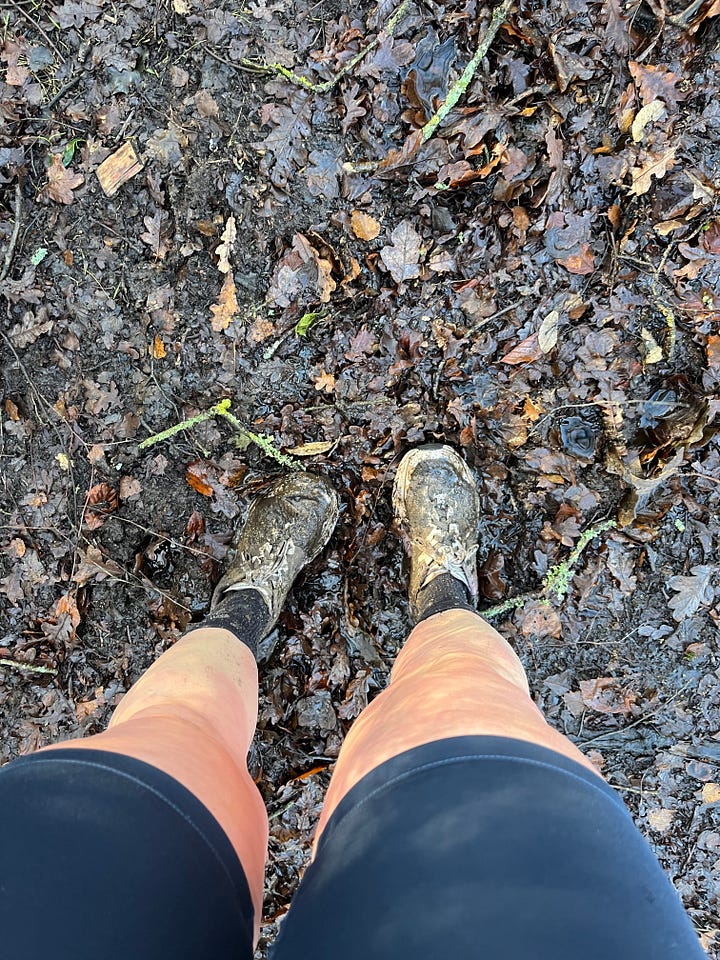
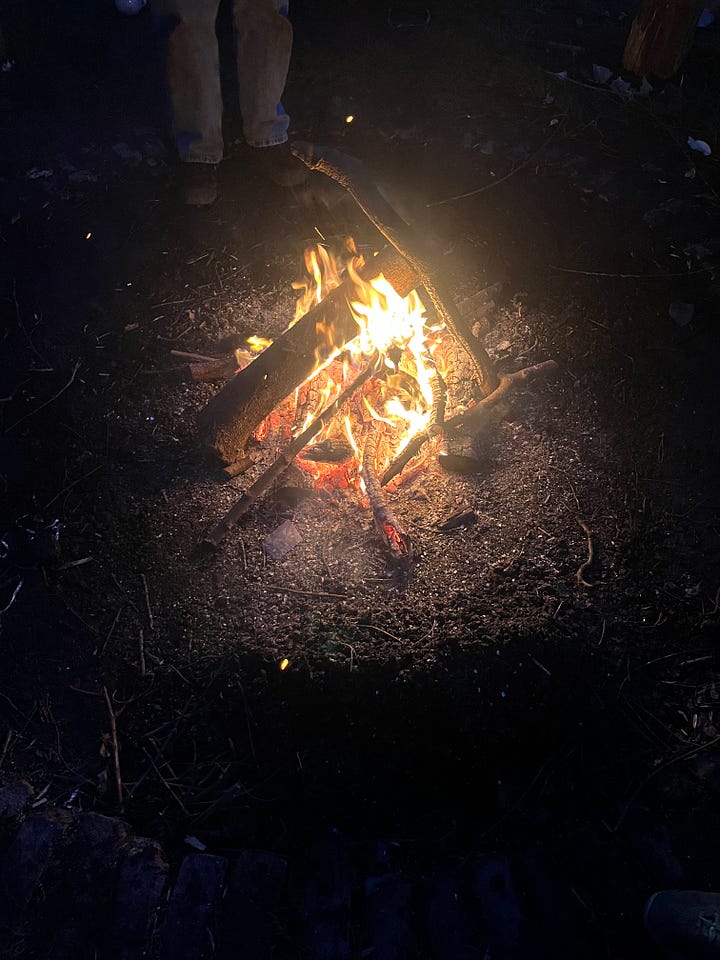
This edition of Food-Fibre-Fashion came to consider participation. The activity of actively and consciously engaging with food and textiles and fashion, and all of the other stuff.
As I was teaching students in the last week on the Sustainable Fashion Design course, we are innately extractive. As humans, we really don’t give anything back because we’ve put and got systems in place whereby our waste doesn’t contribute. Unlike plants and animals, we are outside of nature, really. Looking down from up above. So it’s difficult to see the optimism and hope, the way to change anything. I did end the course with takeaways that they could put into practice, but my aim was that they’d go away wanting to question everything — even what I was telling them.
The above, for the most part, are about consumption habits, though also how we choose to engage in that consumption. Is it selfish, or collaborative? Is it with accurate authentic reviewed information, or blindly taking the information we’re served?
I do get heavily overwhelmed during this season — this month — and feel I need to simply resort to the situation and then escape afterwards. As I’m sure it is for a lot of folk, there is an obligation to attend to. How can we attend in a way that’s more enlivening and truthful? That’s participatory in a conscious way and not just following the crowd? Even if we do have to go along with chaos, then at least acknowledging the destruction is some way of reparation? Each time we feel a little more sickened, a little more aware, we move towards changing... Feels drastic. Though actually, one tiny conversation can spark a lot. I did this with my mum, in explanation of why I didn’t like her using acrylic yarn to crochet with; she didn’t know about microplastics. So, I think this is a hopeful message, an optimistic newsletter and gathering of resources. Knowledge is a gift. It’s collaborative, it’s personal. Imagine if we wrapped up stories instead of physical stuff?
Hit reply if you have any comments, suggestions, recommendations, feedback, or to give some words of encouragement. You can also share or restack any bits.
Stephanie Steele is the founder of Steele Studio, a space that educates everyday folk on the interconnectedness of our food, fibre and fashion systems through community courses and workshops. As an organic food grower and textiles sustainability specialist, she otherwise writes about art, textiles, plants, running and systems design.
Thank you for reading to the very bottom of this monthly newsletter. As an appreciative token, here is an introductory offer of 20% off a paid subscription. The paid subscription includes a monthly fibre guide and a monthly concept guide.



